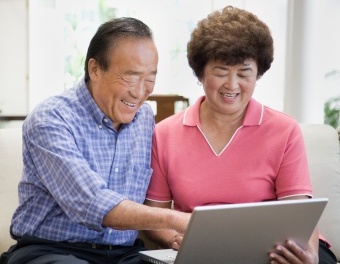
Erwin Tan, M.D.
A recent scientific report elevates social isolation and loneliness to the level of health problems, associating them with a significantly increased risk for early death from all causes. Of course, social isolation and loneliness can become more common with age. And the arrival of the novel coronavirus will almost certainly make the problem worse.
Public officials are asking that we all socially distance ourselves to prevent COVID-19’s spread. The Centers for Disease Control and Prevention recommends that those age 60 and older avoid crowds, and that those in a community with an outbreak stay home as much as possible.
Travel bans and recommendations to avoid nonessential air travel may mean that distant family members may not be able to connect in person. And the COVID-19 outbreak could last for weeks or months.
Here are some things to keep in mind to reduce the threat of social isolation and loneliness as the pandemic continues:
- Social Isolation and Loneliness Are Serious Health Issues
These related conditions affect a significant proportion of adults in the United States and have been calculated as being the equivalent of smoking 15 cigarettes a day. According to the scientific report mentioned above, published by the National Academies of Sciences, Engineering and Medicine and funded by the AARP Foundation, 43 percent of adults age 60 or older in the U.S. reported feeling lonely.

“I love reading the PDF edition of Pacific Citizen on our laptop!”
A 2017 study showed that social isolation among older adults is associated with an estimated $6.7 billion in additional Medicare spending annually. At the same time, people 60 and older and people with severe chronic health conditions — such as heart disease, lung disease and diabetes — are at higher risk for developing more serious illness from COVID-19.
- Plan and Connect
It’s important to talk to family and friends to develop a plan to safely stay in regular touch as we socially distance ourselves, or if we are required to self-quarantine for a possible exposure or are in isolation for a COVID-19 infection. This plan should confirm whom you can reach out to if you need help accessing food, medicine and other medical supplies.
It’s also important that communication and planning allow us to remain safely connected as we practice social distancing. Involve another element: actual social connection. Remaining connected is especially important for people who live alone; regular social contact can be a lifeline for support if they develop symptoms. Regularly scheduled phone calls and video conferences along with texting and emails can help compensate for a lack of in-person contact.
- Know the Organizations That Can Help
Create a list of community and faith-based organizations that you or the people in your plan can contact in the event you lack access to information, health care services, support and resources. If your neighborhood has a website or social media page and you haven’t joined it, consider doing so to stay connected to neighbors, information and resources.
Consider including organizations that provide mental health or counseling services, as well as food and other supplies. State and local governments are setting up resource lists for those affected by COVID-19. The federal Substance Abuse and Mental Health Services Administration also has an online locator and hotline (800-662-HELP (4357) to help people find counseling services near where they live.
AARP Foundation’s Connect2Affect program (https://connect2affect.org/) provides information, self-assessments and affordable options for low-income older people to stay connected.
- Remember Pets (Their Value and Their Needs)
Pets can help combat loneliness, and some pets have been linked with owners’ longevity. The World Health Organization has also determined that dogs cannot get coronavirus. Still, it’s always important to wash your hands after contact with your pets. And just as you need to ensure you have sufficient supplies for yourself and family, be stocked with food and other supplies for your pets.
- Know Who’s Most at Risk for Social Isolation and Loneliness
People at the highest risk of developing more serious illness from COVID-19 and who should be the most vigilant about social distancing will also be the most at risk of increased social isolation and loneliness. For example, the CDC has recommended that long-term care facilities discourage visitation.
I asked my older neighbor across the street last week if she needed help with groceries and if she could pass along my phone number to her children, who live out of town, so they would have another contact on the same street as their mother. That personal interaction reminded me that COVID-19 is testing the bonds that connect us all. Reaching out to our friends, families and neighbors can help protect all of us from COVID-19, as well as social isolation and loneliness.
Erwin Tan, M.D., is a director at AARP Thought Leadership. His areas of expertise include geriatric and integrative medicine, health longevity, volunteering and perceptions of aging.



